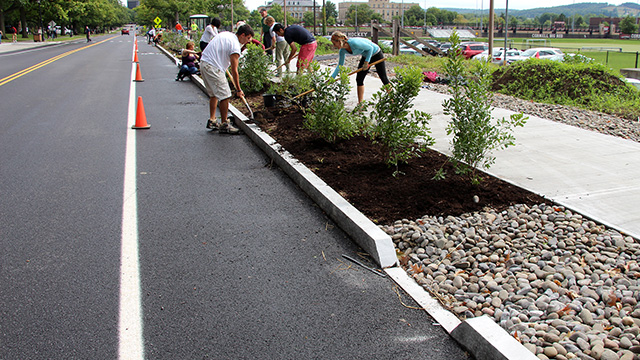 Cornell’s Urban Horticulture Institute (UHI) has released the second edition of its Woody Shrubs for Stormwater Retention Practices (Northeast and Mid-Atlantic Regions). The updated and expanded 57-page guide is an essential resource for choosing plants that can provide low-maintenance, attractive cover for filter strips, swales, rain gardens and other stormwater retention and infiltration practices.
Cornell’s Urban Horticulture Institute (UHI) has released the second edition of its Woody Shrubs for Stormwater Retention Practices (Northeast and Mid-Atlantic Regions). The updated and expanded 57-page guide is an essential resource for choosing plants that can provide low-maintenance, attractive cover for filter strips, swales, rain gardens and other stormwater retention and infiltration practices.
“For plants to thrive in stormwater retention areas, they need to be able to tolerate both dry and periodically saturated soils,” says UHI director Nina Bassuk, professor in the Horticulture Section of the School of Integrative Plant Science. “These can be tough sites with high pH and salt levels. So it’s important to choose the right plants for the job.”
In addition to profiling more than 35 shrubs – including hardiness, sun requirements, site considerations, potential pest issues, and deer resistance – the guide also details site assessment and design considerations for stormwater retention structures. Descriptions also include cultivar information and ecological impacts, such as attractiveness to pollinators.
For a free download, visit the UHI outreach page.
 ‘Urban Eden’ students install bioswale along Tower Road in September 2014.
‘Urban Eden’ students install bioswale along Tower Road in September 2014.


